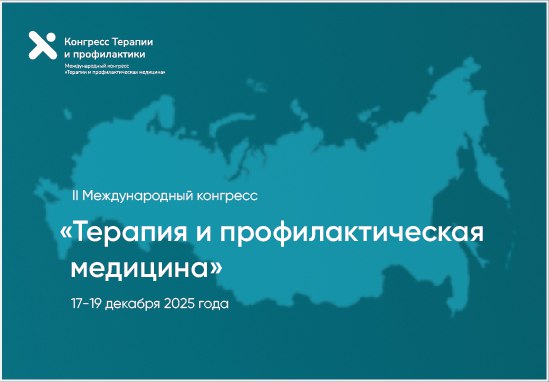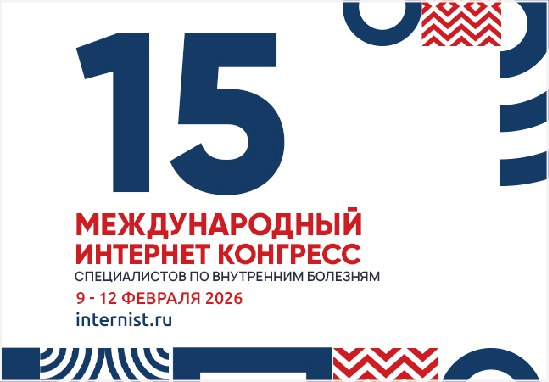СРАВНЕНИЕ ВЛИЯНИЯ ЧЕТЫРЕХ СПОСОБОВ АНТИГИПЕРТЕНЗИВНОЙ ТЕРАПИИ НА ЭЛАСТИЧНОСТЬ АРТЕРИАЛЬНОЙ СТЕНКИ У БОЛЬНЫХ ПОЖИЛОГО ВОЗРАСТА С НЕКЛАПАННОЙ ФИБРИЛЛЯЦИЕЙ ПРЕДСЕРДИЙ
https://doi.org/10.15829/1728-8800-2013-4-10-15
Аннотация
Цель. Сравнить влияние различных способов антигипертензивной терапии (АГТ) на упругоэластичные свойства общих сонных артерий (ОСА) и грудного отдела аорты у пациентов пожилого возраста с неклапанной фибрилляцией предсердий (ФП) на основании данных ультразвукового исследования (УЗИ).
Материал и методы. Обследованы 364 пациента (208 мужчин и 156 женщин) в возрасте 65–80 лет с неклапанной ФП, которых рандомизировали на четыре группы (гр.). I гр. (n=91) состояла из больных, которым назначали периндоприл в дозе 5–10 мг/сут. Во II и III гр. вошли пациенты, получавшие валсартан в дозе 80–160 мг/сут. (n=92) или валсартан в той же дозе в комбинации с розувастатином по 10 мг/cут. (n=90). В IV гр. (n=91) больные получали лерканидипин в дозе 10–20 мг/сут. С помощью УЗИ оценивались эластичные свойства грудного отдела аорты и ОСА, лодыжечно-плечевой индекс.
Результаты. Применение в течение 2 лет периндоприла, валсартана, его комбинации с розувастатином и лерканидипина ассоции- ровалось с повышением индекса растяжимости ОСА и снижением коэффициента жесткости аортальной стенки и скорости распро- странения пульсовой волны по сравнению с исходным состоянием. Комбинация валсартана в дозе 80–160 мг/сут. и розувастатина в дозе 10 мг/сут. оказывала наиболее выраженное влияние на податливость сосудистой стенки по сравнению с другими вариантами лечения и снижала частоту ишемического инсульта, инфаркта миокарда и смертность.
Заключение. При выборе АГТ у геронтологических больных с неклапанной ФП валсартан в сочетании с розувастатином могут рассматриваться в качестве оптимальной стратегии, позволяющей улучшить упругоэластичные свойства артериальной стенки и снизить частоту кардиоваскулярных осложнений.
Об авторах
В. И. ШевелевРоссия
к. м.н., заведующий отделением ультразвуковой диагностики краевого диагностического центра
Тел.: (861) 222–98–62
С. Г. Канорский
Россия
д. м.н., профессор кафедры госпитальной терапии
Список литературы
1. Lukyanov MM, Boitsov SA. The rigidity of the arterial wall as a factor of cardiovascular risk and prognosis in clinical practice. Heart 2010, 3 (53): 156–9. Russian (Лукьянов М. М., Бойцов С. А. Жесткость артери- альной стенки как фактор сердечно-сосудистого риска и прогноза в клинической практике. Сердце 2010; 3 (53): 156–9).
2. Safar ME, London GM, Plante GE. Arterial stiffness and kidney function. Hypertension 2004; 43 (2): 163–8.
3. Laurent S, Boutouyrie P. Arterial stiffness: a new surrogate end point for cardiovascular disease? J Nephrol 2007; 20 Suppl 12: S45–50.
4. DeLoach SS, Townsend RR. Vascular stiffness: its measurement and significance for epidemiologic and outcome studies. Clin J Am Soc Nephrol 2008; 3 (1): 184–92.
5. Gosse P, Roche F, Dauphinot V, et al. Components of arterial stiffness in a population of 65-year-old subjects: PROOF study. J Hypertens 2008; 26 (6): 1138–46.
6. Mancia G, de Backer G, Dominiczak A, et al. 2007 Guidelines for the Management of Arterial Hypertension. The Task Force for the Management of Arterial Hypertension of the Europian Society of Hypertension (ESH) and of the Europian Society of Cardiology (ESC). J Hypertens 2007; 25: 1105–87.
7. Mancia G, Laurent S, Agabiti-Rosei E, et al. Reaprassial of Europian guidelines on Hypertension Task Force document. J Hypertens.2009; 27 (11): 2121–58.
8. SHEP Cooperative Research Group. Prevention of stroke by antihypertensive drug treatmеnt in older persons with isolated systolic hypertension: final results of the Systolic Hypertension in the Elderly Program. JAMA 1991; 265: 3255–65.
9. Dahlof B, Devereux RB, Kjeldsen SE, et al. Cardiovascular morbidity and mortality in the Losartan Intervention For Endpoint Reduction in Hypertension Study (LIFE): a randomized trial against atenolol. Lancet 2002; 359: 995–1003.
10. Williams B, Lacy PS, Thom SM, et al. Differential impact of blood pressure-lowering drugs on central aortic pressure and clinical outcomes: principal results of the Conduit Artery Function Evaluation (CAFE) Study. Circulation 2006; 113: 1213–25.
11. Harloff A, Strecker C, Reinhard M, et al. Combined measurement of carotid stiffness and intima-media thickness improves prediction of complex aortic plaques in patients with ischemic stroke. Stroke 2006; 37: 2708–12.
12. Sugioka K, Hozumi T, Sciacca R, et al. Impact of aortic stiffness on ischemic stroke in elderly patients. Stroke 2002; 33: 2077–81.
13. Laurent S, Cockcroft J, Van Bortel L, et al. Expert consensus document on arterial stiffness: methodological issues and clinical applications. Eur Heart J 2006; 27 (21): 2588–605.
14. Lelyuk VG, Lelyuk SE. Ultrasonic Angiology. 3rd ed., Ext. and break., M.: Real Time 2007, 416 p.: ill. Russian (Лелюк В. Г., Лелюк С. Э. Ультразвуковая ангиология. 3-е изд., доп. и перер.; М.: Реал Тайм 2007; 416 с.: ил).
15. McEniery CM, McDonnell BJ, So A, et al. Aortic calcification is assotiated with aortic stiffness and isolated systolic hypertension in healthy individuals. Hypertension 2009; 53: 524–31.
16. Millar JA, Lever AF, Burke V. Pulse pressure as a risk factor for cardiovascular events in the MRC Mild Hypertension Trial. J Hypertens 1999; 17: 1065–72.
17. Domanski MJ, Davis BR, Pfeffer MA, et al. Isolated systolic hypertension prognostic information provided by pulse pressure. Hypertension 1999; 34: 375–80.
18. Calabia J, Torguet P, Garsia M, et al. Doppler ultrasound in the measurement of pulse wave velocity agreement with the Complior method. Cardiovasc Ultrasound 2011; 9: 13–8.
19. Kolesnikova IA, Troshina AA, Bandzhan V, et al. The assessment of pulse wave velocity in order to reclassify the risk of cardiovascular events in hypertension. Clin pharmacol and ter 2011; 20 (3): 90–2. Russian (Колесникова И. А., Трошина А. А., Банджан В. и др. Значение оценки скорости распространения пульсовой волны для реклассификации риска сердечно-сосудистых событий при артериальной гипертонии. Клин фармакол и тер 2011; 20 (3): 90–2).
20. Muiesan M, Salvetti M, Paini A, et al. Pulse wave velosity and cardiovascular risk stratification in a general population: the Vobarno study. J Hypertension 2010; 28 (9): 1935–43.
21. Mackenzie IS, McEniery CM, Dhakam Z, et al. Comparison of the effects of antihypertensive agents on central blood pressure and arterial stiffness in isolated systolic hypertension. Hypertension 2009; 54: 409–13.
22. Karalliedde J, Smith A, DeAngelis L, et al. Valsartan improves arterial stiffness in type 2 diabetes independently of blood pressure lowering. Hypertension 2008; 51: 1617–23.
23. Dart AM, Cameron JD, Gatzka CD, et al. Similar effects of treatment on central and brachial blood pressure in older hypertensive subjects in the Second Australian National Blood Pressure Trial. Hypertension 2007; 49: 1242–7.
24. Mitchell GF, Dunlap ME, Warnica W, et al. Long-term trandolapril treatment is assotiated with reduced aortic stiffness: the prevention of events with angiotensin-converting enzyme inhibition hemodinamic substudy. Hypertension 2007; 49: 1271–7.
25. Messerli FH, Bangalore S, Ruschitzka F. Angiotensin receptor blockers: baseline therapy in hypertension? Eur Heart J 2009; 30: 2427–30.
26. Schrader J, Lüders S, Kulschewski A, et al. Morbidity and Mortality After Stroke, Eprosartan Compared with Nitrendipine for Secondary Prevention: principal results of a prospective randomized controlled study (MOSES). Stroke 2005; 36: 1218–26.
27. Sawada T, Yamada H, Dahlöf B, Matsubara H; KYOTO HEART Study Group. Effects of valsartan on morbidity and mortality in uncontrolled hypertensive patients with high cardiovascular risks: KYOTO HEART Study. Eur Heart J 2009; 30: 2461–9.
28. Aronov DM. Pleiotropic effects of statins. Cardiology 2008, 8: 60–8. Russian (Аронов Д. М. Плейотропные эффекты статинов. Кардиология 2008; 8: 60–8).
29. Egede R, Jensen LO, Hansen HS, et al. Effect of intensive lipid-lowering treatment compared to moderate lipid-lowering treatment with rosuvastatin on endothelial function in high risk patients. Int J Cardiol 2011; Feb 22 [Epub ahead of print].
30. Long SB, Blaha MJ, Blumenthal RS, Michos ED. Clinical utility of rosuvastatin and other statins for cardiovascular risk reduction among the elderly. Clin Interv Aging 2011; 6: 27–35.
31. Han SH, Chung WJ, Kang WC, et al. Rosuvastatin combined with ramipril significantly reduced atheroma volume by anti-inflammatory mechanism: Comparative analysis with rosuvastatin alone by intravascular ultrasound. Int J Cardiol 2011 Feb 2. [Epub ahead of print].
32. Mäki-Petäjä KM, Wilkinson IB. Anti-inflammatory drugs and statins for arterial stiffness reduction. Curr Pharm Des 2009; 15 (3): 290–303.
33. Schmidt M, Christiansen CF, Mehnert F, et al. Nonsteroidal anti-inflammatory drug use and risk of atrial fibrillation or flutter: population-based case-control study. Br Med J 2011; 343: d3450. doi: 10.1136/ bmj.d3450.
Рецензия
Для цитирования:
Шевелев В.И., Канорский С.Г. СРАВНЕНИЕ ВЛИЯНИЯ ЧЕТЫРЕХ СПОСОБОВ АНТИГИПЕРТЕНЗИВНОЙ ТЕРАПИИ НА ЭЛАСТИЧНОСТЬ АРТЕРИАЛЬНОЙ СТЕНКИ У БОЛЬНЫХ ПОЖИЛОГО ВОЗРАСТА С НЕКЛАПАННОЙ ФИБРИЛЛЯЦИЕЙ ПРЕДСЕРДИЙ. Кардиоваскулярная терапия и профилактика. 2013;12(4):10-15. https://doi.org/10.15829/1728-8800-2013-4-10-15
For citation:
Shevelev V.I., Kanorskyi S.G. COMPARISON OF THE EFFECTS OF FOUR ANTIHYPERTENSIVE THERAPY VARIANTS ON ARTERIAL WALL ELASTICITY IN ELDERLY PATIENTS WITH NONVALVULAR ATRIAL FIBRILLATION. Cardiovascular Therapy and Prevention. 2013;12(4):10-15. (In Russ.) https://doi.org/10.15829/1728-8800-2013-4-10-15
























































